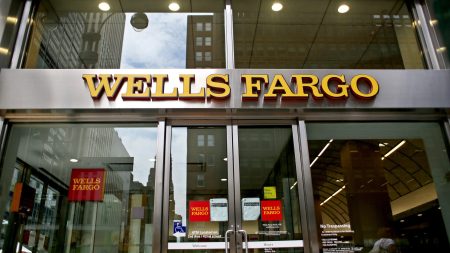High-yield savings accounts offer the best of both worlds: easy access to your money combined with a rate of return that’s competitive for deposit accounts. This makes high-yield savings accounts a great place to set aside funds for emergencies or other short-term financial goals.
The yields earned on savings accounts are variable, which means the bank can raise or lower them at will. Banks offering top rates tend to pay higher yields when the Federal Reserve raises rates, and they often decrease their yields when the Fed lowers rates.
Savings accounts generally accrue compound interest, which means they earn interest on the principal amount and on the interest. Depending on the account, interest may compound daily, monthly or annually.
Here we’ll show you how much interest $10,000 in a high-yield savings account could earn you in one year. For comparison, we’ll also look at how much interest you’d likely get from an account that earns the national average yield and another that earns the rock-bottom yield commonly offered from big brick-and-mortar banks.
For simplicity’s sake, the rates in our examples remain unchanged for a year, although in reality some banks will change their savings account rates at least once over a year’s time. Our examples also assume that you don’t add or withdraw any funds over the year, and that compound interest is accrued on a daily basis.
| Type of savings account | Typical APY | Interest on $10,000 after 1 year | Total amount in savings account after 1 year |
|---|---|---|---|
| Savings account paying competitive rates | 5.00% | $512 | $10,512 |
| Savings account paying the national average | 0.57% | $57 | $10,057 |
| Savings accounts from various big brick-and-mortar banks | 0.01% | $1 | $10,001 |
National average savings account rates
The national average annual percentage yield (APY) for savings accounts is currently 0.57 percent, according to Bankrate’s Nov. 4, 2024 weekly survey of institutions. While this is higher than the rock-bottom yields earned by some banks, it’s still around nine times lower than what you can earn from various top-earning savings accounts.
If you deposited $10,000 into a savings account that earns the national average APY of 0.57 percent — and didn’t add any money to it — it would have earned around $57 in total interest after one year, making your total balance $10,057. This assumes the APY hasn’t changed at all over the year. This is shown in the following breakdown:
Type of account: Savings account
Total amount deposited: $10,000
APY: 0.57%
Total interest after one year: $57
Total account balance after one year: $10,057
You can use Bankrate’s savings account interest calculator to determine how much interest a savings account can earn over time. Just enter the relevant information, which includes the amount of money in the account, how many years you’ll save for, the rate of return, and how much you’ll contribute over time.
Competitive savings account rates
The top rates earned by various high-yield savings accounts are currently around 5 percent. Such competitive APYs are often found at online-only banks, which may see them as a way to draw customers away from big banks that pay lackluster yields. What’s more, online banks don’t have the overhead costs of maintaining branches, so they can pass the savings along in the form of higher yields.
If you deposited $10,000 into a savings account that earns a highly competitive APY of 5 percent and left that money untouched, you’d earn around $512 in a year if the rate remains unchanged.
Type of account: Savings account
Total amount deposited: $10,000
APY: 5.00%
Total interest after one year: $512
Total balance in account after one year: $10,512
Savings account rates from big banks
Various big banks that maintain branches tend to pay rock-bottom yields on their savings accounts. These include institutions such as Chase Bank and Bank of America. Some customers remain with these banks because they’re familiar with them or because they prefer having easy access to branches, but the downside is that your savings account is earning next to nothing.
If you deposited $10,000 into a savings account that earns an APY of 0.01 percent, and you didn’t add or withdraw money, it would earn $1 in interest in one year’s time if the APY remained the same.
Type of account: Savings account
Total amount deposited: $10,000
APY: 0.01%
Total interest after one year: $1
Total balance in account after one year: $10,001
The bottom line is that a high-yield savings account currently earns a rate that’s nearly nine times greater than the national average yield and around 500 times higher than accounts that pay rock-bottom yields.
How can I find the best high-yield savings account?
On Bankrate, you can compare high-yield savings accounts to find the right account for you that pays a high rate and doesn’t charge fees — or makes them easy to avoid. Some top options include savings accounts from Ally Bank, Quontic Bank and Marcus by Goldman Sachs.
In general, yields are higher at online banks, such as Ally, than at big brick-and-mortar banks. Online banks are also less likely to charge any monthly maintenance fees on their savings and checking accounts.
Who should get a savings account?
Anyone and everyone would benefit from having a savings account with a federally insured bank or credit union, since the money is accessible if you need it in a pinch — such as to pay for an unexpected major car repair or a big medical bill. A high-yield savings account provides easy access to your money while earning a competitive return on the funds.
Are savings accounts safe?
Your money in a savings account is safe as long as it’s at a bank that’s insured by the Federal Deposit Insurance fund (FDIC) and within the set limits and guidelines. The FDIC insures up to $250,000 per depositor, per FDIC-insured bank, per ownership category.
Similarly, money in a credit union is protected when the credit union is a member of the National Credit Union Administration (NCUA). The NCUA manages the National Credit Union Share Insurance Fund (NCUSIF), which guarantees your money is safe. This insurance is similar to that of the FDIC, with a $250,000 cap for each account and owner.
Pros and cons of savings accounts
Pros
- Liquid savings accounts provide easier access to your money than CDs and some other investments, making them a good place for your emergency fund.
- The variable APYs earned by high-yield savings accounts often increase when the Federal Reserve raises its rates.
- Your money in a federally insured institution is protected in the event of a bank or credit union failure, as long as it’s within FDIC or NCUSIF limits and guidelines.
Cons
- In a falling-rate environment, you might decide a fixed-rate certificate of deposit (CD) is a better place for your money, since savings account rates would be likely to drop over time.
- It’s possible to earn more interest elsewhere, such as in certain stocks (although many investments are riskier than a savings account).
- While money is generally easy to access in a savings account, some limit withdrawals or transfers to just six in a month.
–Freelance writer Emily Batdorf contributed to updating this article.
Read the full article here










